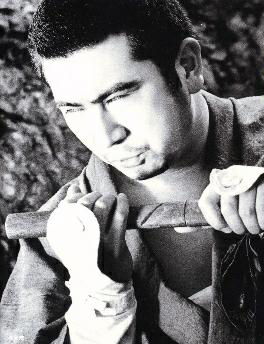K Is for Killing
In most RPGs, the player characters make their living through killing and looting. It’s sort of a shared fantasy version of just about every Hollywood action blockbuster. You know the type. Some Bad Guy pushes the Hero in some evil way. And not just pushes him, but pushes him Too Far. The Hero unleashes death and destruction and, just before the credits start to roll, walks away without the Authorities wanting to so much as have a polite chat about all the bloodshed and explosions. In other words, there is something profoundly silly about most PCs in most RPGs.
This becomes even more apparent in RPGs set in modern or futuristic settings where the PCs operate largely within the confines of urban centers. Some sort of metanarrative justification explaining why the Powers That Be tolerate a gang of murderhobos kicking down doors and busting caps is needed to avoid the silliness (assuming avoiding silliness is a goal). PCs taking the law into their own hands, becoming judge and jury and executioner and repo man, ought to very quickly run afoul of the campaign world’s authorized judges, juries, executioners, and repo men.
As I continue work on Tiamat’s Throne, this issue lurks in the back of my mind. In grand space opera fashion, Tiamat’s Throne features an Evil Empire with an interstellar reach. The Powers That Be in the campaign’s space sector not only jealously guard their official prerogatives and functions, they actively oppress and even murder dissenters and lawbreakers. When I start playtesting Tiamat’s Throne, I’m not planning on putting any limitations on the nature of the player’s characters except for this one: The PCs don’t work for the Empire. I’m not saying they have to be rebels, but they aren’t going to be collaborators.
For this reason, the players will need to exercise caution. A gang of murderhobos ranging the cosmos, looting and pillaging as they go, are very quickly going to end up with some very powerful, angry people gunning for them. Avoiding this danger will likely require the players to focus their murderhobo-ism somewhere out of the reach/notice of the Empire, such as undead-infested Castor, or else be much more circumspect about the types of adventures they go on.
Of course, I’m writing Tiamat’s Throne to include enough options to support a variety of genres and play-styles. The emphasis on tyranny lets players be freedom fighters. The emphasis on corrupt corporations let’s them get involved in Shadowrun-style espionage. Castor caters to survival horror. There’s a water world for people who want to make fun of Kevin Costner, dungeon crawls in the subterranea of Elanor, et cetera, et cetera. I’m even going to work in a dinosaur world.
So, while Tiamat’s Throne may encourage my players toward a specific type of looting and pillaging, the fundamental activities of adventures in the dragon-ruled space sector remain the same as most other RPGs. Tiamat’s empire is a big place. There’s a lot to kill and loot.

 Notes: Here’s my riff on Shintaro Katsu’s Zatoichi. With sword in hand, he is deadly. I simulated his mastery of iaido via a Container power. When armed with any sword or sword-like weapon, the Blind Swordsman exhibits superhuman skill. He uses Deflect against slow projectiles as well as for melee blocks. A successful Deflect triggers his Defensive Attack. (Thus, he Quick Draws his sword, blocks the attack, and slices into one or more nearby targets.) Even when not consciously using his swordsmanship skills to block attacks, he is a slippery target (which explains the Shield power). His basic attack is the Rapid Attack, an Autofire Mighty Strike with a reach of 10 feet. The Blind Swordsman has two alternate powers to Rapid Strike: a Blindingly Fast Attack (Mighty, Subtle Strike) and a Powerful Attack (Mighty, Split Attack Penetrating Strike).
Notes: Here’s my riff on Shintaro Katsu’s Zatoichi. With sword in hand, he is deadly. I simulated his mastery of iaido via a Container power. When armed with any sword or sword-like weapon, the Blind Swordsman exhibits superhuman skill. He uses Deflect against slow projectiles as well as for melee blocks. A successful Deflect triggers his Defensive Attack. (Thus, he Quick Draws his sword, blocks the attack, and slices into one or more nearby targets.) Even when not consciously using his swordsmanship skills to block attacks, he is a slippery target (which explains the Shield power). His basic attack is the Rapid Attack, an Autofire Mighty Strike with a reach of 10 feet. The Blind Swordsman has two alternate powers to Rapid Strike: a Blindingly Fast Attack (Mighty, Subtle Strike) and a Powerful Attack (Mighty, Split Attack Penetrating Strike).